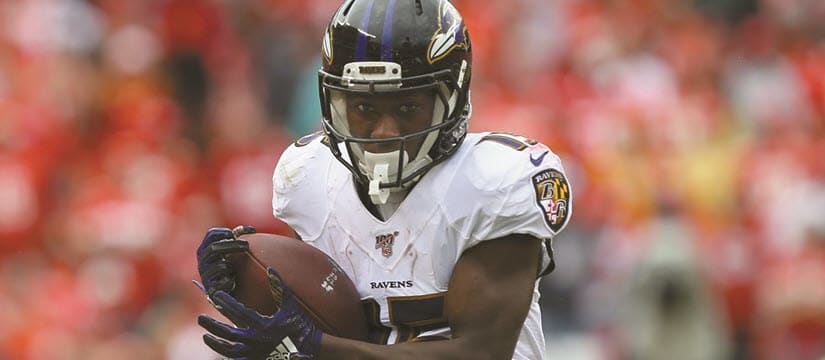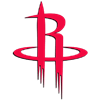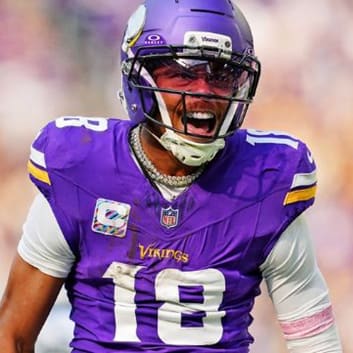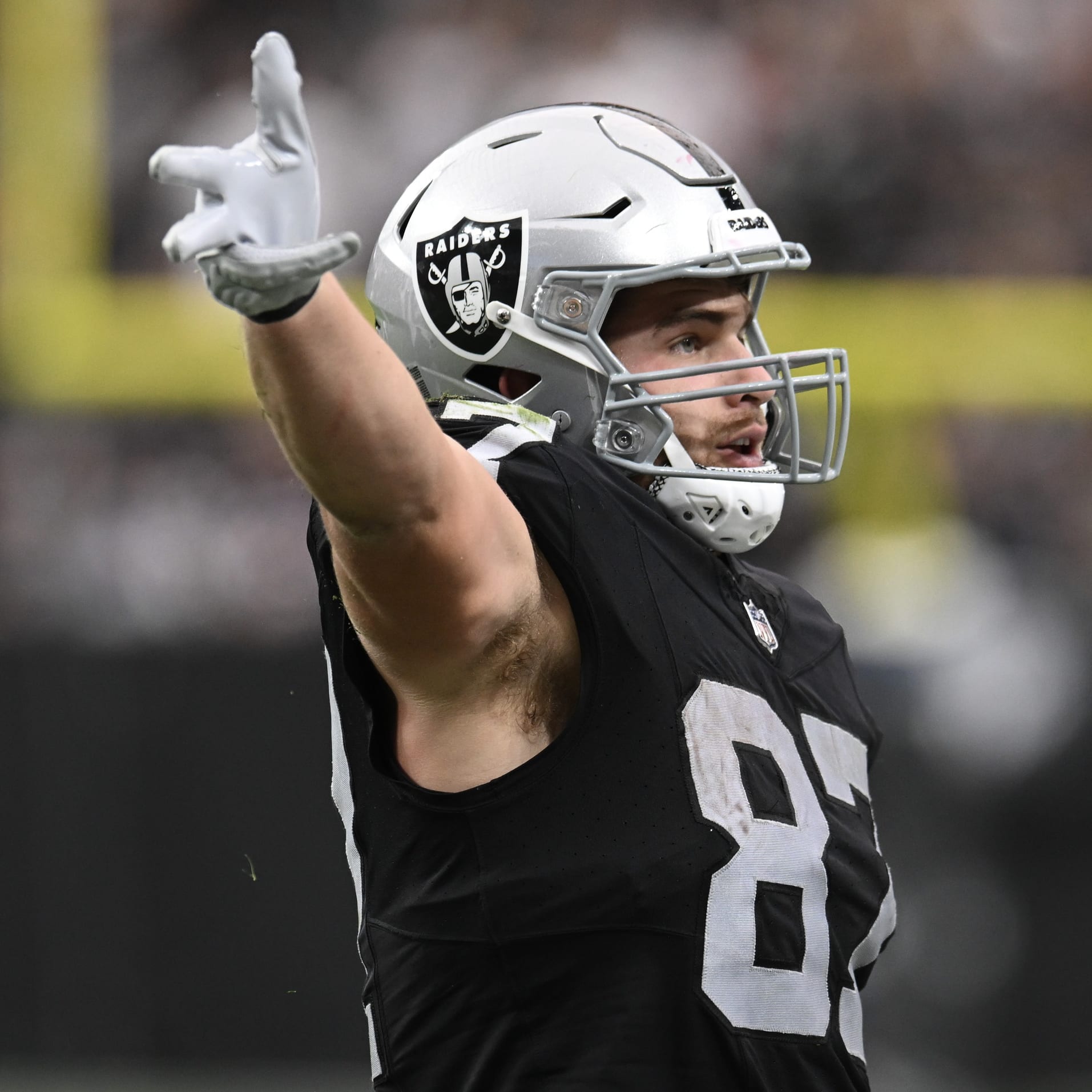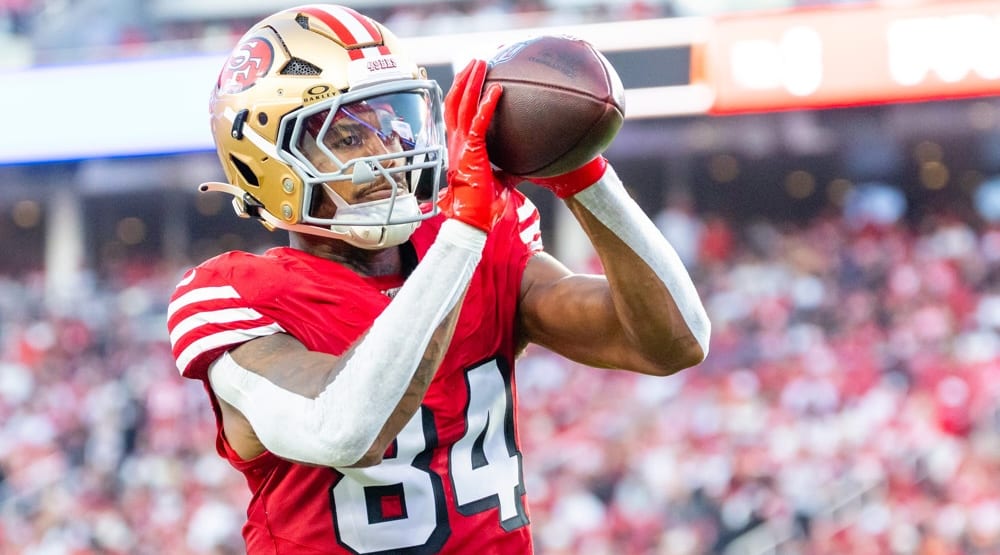With final cutdowns concluded we finally know for sure what players these teams will carry in the NFL season, and with that we can fine-tune our projections. Some of those last-second adjustments will age better than others, and in this final week there will be new opportunities to target in Underdog Best Ball drafts as the markets resettle.
This article will look at six of the best values on UnderDog Best Ball in light of the recent ADP shifts.
Listed in descending order of Underdog ADP:
Darrell Henderson, RB, LAR (59.4 Underdog ADP)
Henderson probably got a little too expensive immediately following the season-ending injury to Cam Akers. Even if so, the Sony Michel trade has helped balance things out by causing an overreaction in the other direction. It's possible that the Michel trade truly changed nothing for Henderson – he wasn't going to play more than 60 or so percent of the snaps anyway – but now you can get him in the late fifth round and probably sometimes in the sixth. If you believe the Rams offense is going places under Matthew Stafford then you should think the same about the team's starting running back, and Henderson is still that. Just as importantly, Henderson is good. He could get by this year just riding the coattails of the Rams offense, but it's just as likely that he's primary part of why the Rams are good.
DJ Chark, JAC (99.4 Underdog ADP)
In Chark's last 28 games with the Jaguars they completed 658 of 1,057 pass attempts for 7,006 yards and 43 touchdowns. Chark caught 126 of 211 of those targets for 1,714 yards and 13 touchdowns. He turned 23 in late September of 2019, the season in which he logged 15 of those 28 games, meaning he turned 24 toward the end of this sample. This is all very impressive, but apparently no one cares. Chark produced the way he did despite the fact that his quarterbacks – rookie Gardner Minshew in 2019 and a rotation between Minshew and Mike Glennon in 2020 – can't throw downfield, where Chark especially thrives.
In a sample where the Jaguars completed 62.2 percent of their passes at 6.6 yards per pass, Chark caught 59.7 percent of his targets at 8.1 yards a pop. Even while he was still developing as a prospect, Chark had no trouble blasting past the Jaguars baseline. On 20.0 percent of the team targets he produced 24.5 percent of their passing yardage and 30.2 percent of their touchdowns. This might not be a star NFL wide receiver, but it's clearly a Pro Bowl-caliber one, and maybe one capable of an All-Pro season or two. Whatever it is, this is not a receiver who belongs in the ninth round of a fantasy football draft.
Chark is 6-foot-3, 198 pounds with a 4.34-second combine 40, 40-inch vertical and 129-inch broad jump. Don't overthink this. The skills are there, the athletic tools are there, and the quarterback upgrade from Minshew/Glennon to Trevor Lawrence can hardly be measured. Chark is going to be a problem for NFL defenses and the people who passed on him in fantasy drafts in 2021.
Marquise Brown, BAL (112.2 Underdog ADP)
Brown is less useful in redraft and PPR leagues – he's more like a three-point specialist than a volume scorer – but few shoot as deadly from long range as Brown does, and his new ADP is forgetting that fact and reimagining Brown as a receiver who apparently does nothing well. That's not at all true – this is a good player who starts in an offense that should be among the league leaders in touchdowns scored. Brown should be one of its main touchdown sources. His current ADP on Underdog is positively criminal!
Brown missed time with a hamstring injury in training camp but has been practicing since August 30. Clearly, barring a setback, he will be starting for the Ravens in Week 1. Even after Rashod Bateman returns from injury, Brown will remain a starter. For him to go later than the likes of Rondale Moore, Jarvis Landry, Michael Pittman, etc. is truly hilarious. Brown has 1,353 yards and 15 touchdowns in 1,373 NFL snaps, and he just turned 24 in June. Health permitting, he will play more than 800 snaps in 2021. Figure it out!
James Conner, RB, ARI (118.7 Underdog ADP)
Conner's injury concerns are of course substantial, but in the 11th-round range you're exclusively choosing from runners with either injury issues or, more likely and more problematically, a lack of role and talent. Conner has ability and a clear role, yet his current price acts as if neither is the case. He should hold the same or maybe even greater role than the one held by Kenyan Drake last year. Obviously Drake was a disappointment for fantasy owners but you don't make up for the bad idea of taking Drake in the first round in 2020 by passing on the good idea of drafting Conner in the 10th round in 2021. Drake saw 239 carries and 31 targets in 615 snaps last year, so the Drake role could shrink substantially in 2021 and Conner would still clear value at this price. And what if the role doesn't actually shrink?
Malcolm Brown, RB, MIA (203.4 Underdog ADP)
It's possible that Myles Gaskin (71.6 Underdog ADP) is also going too low, but Brown definitely is. At the very least, if drafters are low on Gaskin because they assume he will hold a meager share of the Miami offense, then they should necessarily become higher on Brown because he's the only candidate to steal the lost share in question. Brown just fell to the 18th round of a draft I was in, even after they let me get Gaskin in the late seventh round. What sense does that make?
Brown probably isn't a very good running back, and he's probably especially weak from scrimmage. A lot of what makes Brown appealing to a coach – ball security, reliable blocking – don't mean anything for fantasy investors. With that said, he's by default the only power runner on the Dolphins roster, and the only runner between himself, Gaskin, and Salvon Ahmed. If we believe Gaskin will play sparingly, we can't reason it's to make room for Ahmed. Ahmed will be what he was at Washington in college: Gaskins' backup. Moreover, at under 200 pounds Ahmed can't take volume in his own right.
Quintez Cephus, DET (214.4 Underdog ADP)
Unlike Chark and Brown, Cephus is far from a slam dunk. Whereas Chark and Brown at these prices are highway robberies, Cephus is more like fumbling around with a metal detector on a busy beach. You shouldn't get your hopes up too high, but maybe someone had a few too many drinks and lost their jewelry in there.
However it turns out, it appears safe to say in the meantime that the Lions are about to give Cephus a real shot as their starting outside receiver opposite Tyrell Williams. Breshad Perriman was the previous assumption, but the Lions cut him, leaving just Williams, Cephus, Amon-Ra St. Brown and Kalif Raymond as their top four receivers. St. Brown and Raymond are likely slot specialists, so that seems to leave Cephus as the other starter by default.
Cephus probably earned the role by more than default, though. He's a weird prospect – he's rather slow, and usually that results in a receiver getting moved into the slot, where speed matters less – but the Lions view him distinctly as an outside receiver anyway. They're probably right to do it, because Cephus simply appears to be the rare case of a slow receiver who still gets open on the boundary. Not necessarily open vertically, but Cephus simply knows how to get the defender facing the wrong direction before breaking his route the opposite way, creating a viable opening on the sideline for the quarterback.
Crucially, Cephus' lack of speed means he isn't a candidate for any decoy routes. That will be a burden left to the receivers fast enough to qualify: Williams and especially Raymond. Jared Goff is not gunning downfield, and this point is the general basis for the hype around St. Brown. One detail overlooked in that reasoning is the fact that Cephus will be running at a similar route depth on the outside while St. Brown runs from the inside, and Cephus is likely more threatening in that part of the field than Williams is, not to mention Perriman. Cephus has to be one of the best options in the final round.


